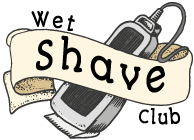Are you torn between the classic ritual of wet shaving and the modern convenience of dry shaving? Choosing between these two methods can be a daunting task, especially with the abundance of information and opinions available.
But fear not, as we delve into the age-old debate of wet shave vs. dry shave to provide clarity and guidance.
Wet shaving, with its luxurious lather and precision blades, offers a traditional grooming experience that many swear by for its smoothness and elegance.
On the other hand, dry shaving with its electric razors promises speed and convenience, catering to the fast-paced lifestyles of today.
Join us as we explore the nuances of each technique, comparing factors such as skin sensitivity, efficiency, and environmental impact to help you make an informed decision for your grooming routine. Stay sharp.
What Is Wet Shave?
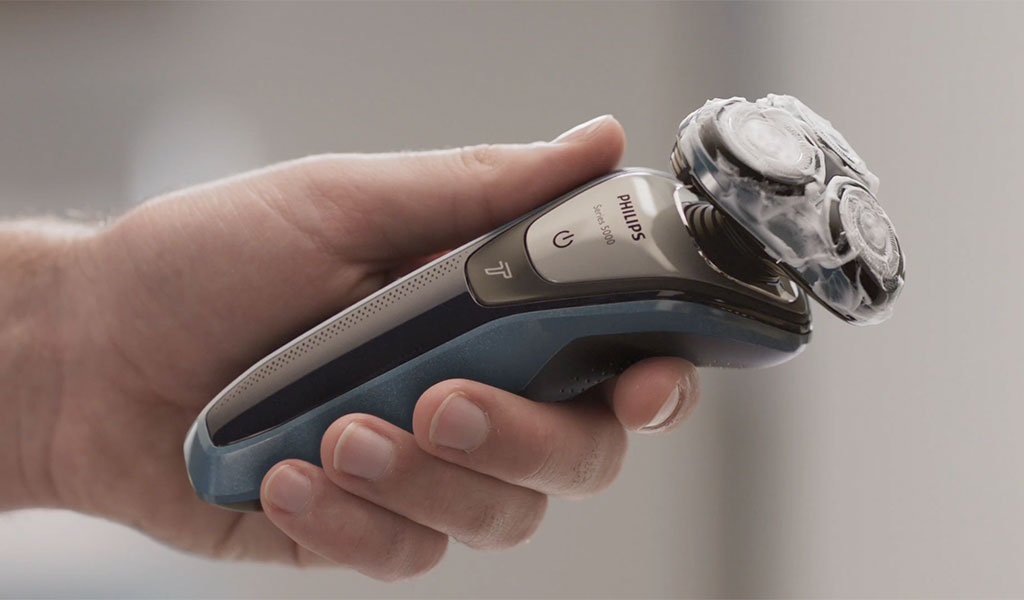
Wet shaving is a traditional method of shaving that involves the use of a razor, shaving brush, shaving cream or soap, and water.
Unlike dry shaving with an electric razor, wet shaving relies on creating a lather with shaving cream or soap applied to the face with a brush.
This process softens the hair and lubricates the skin, allowing for a smoother shave while reducing irritation and razor burn.
Wet shaving can be done with various types of razors, including safety razors, straight razors, or cartridge razors, each offering a different shaving experience.
Many enthusiasts prefer wet shaving for its closer shave and the ritualistic aspect it brings to grooming routines.
Additionally, wet shaving is often considered more environmentally friendly as it produces less waste compared to disposable cartridges used in dry shaving methods.
What Is Dry Shave?
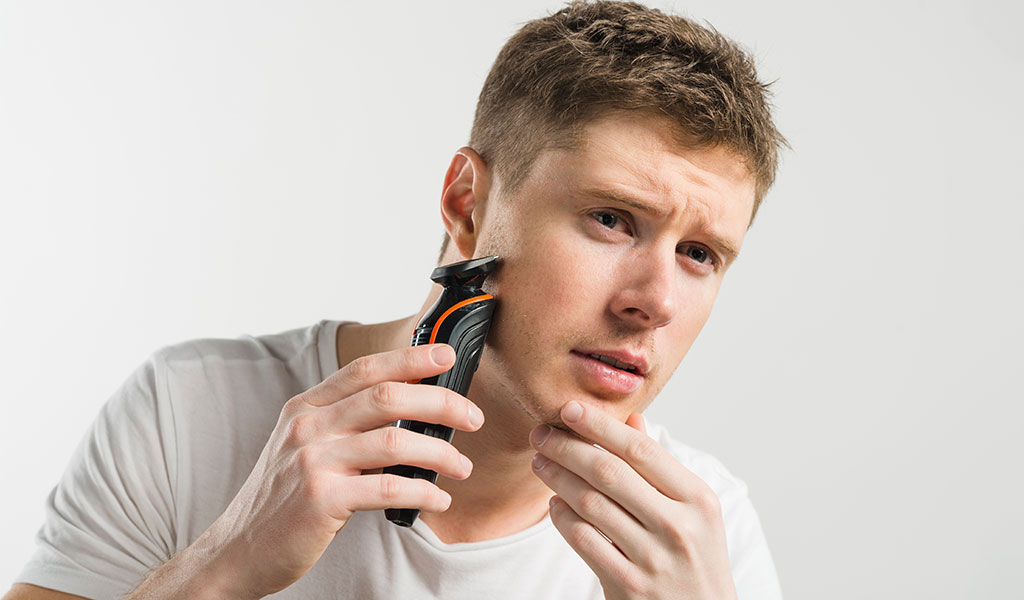
Dry shaving is a method of shaving that doesn’t involve the use of water or shaving cream. Instead, it utilizes an electric razor or shaver that can be used directly on dry skin.
The electric razor typically has rotating or oscillating blades that cut the hair close to the skin’s surface without the need for additional lubrication.
Dry shaving is often chosen for its convenience, as it can be done quickly without the need for water or shaving products.
However, it may not provide as close a shave as wet shaving and can sometimes cause more irritation or discomfort, especially for those with sensitive skin.
Despite these drawbacks, dry shaving remains popular for its ease of use and suitability for on-the-go or travel situations.
Wet Shave Vs Dry Shave: At A Glance (Table)
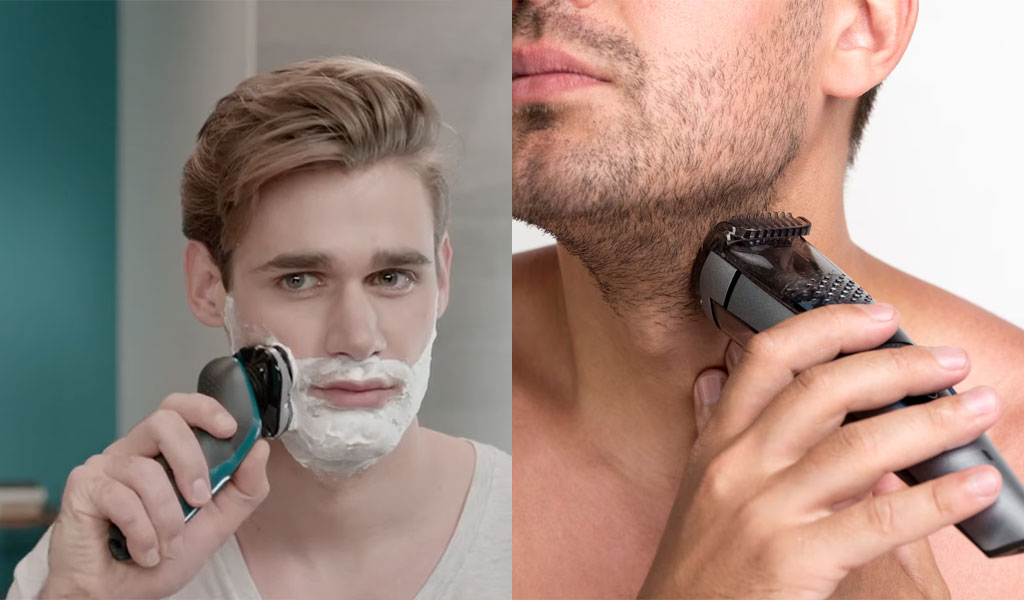
Here’s a quick comparison table between wet shave and dry shave:
| Aspect | Wet Shave | Dry Shave |
| Method | Uses water, shaving cream or soap, razor, and brush | Uses an electric razor or shaver directly on dry skin |
| Lubrication | Provides lubrication with shaving cream or soap | Typically doesn’t use additional lubrication |
| Skin Preparation | Softens hair and lubricates skin for a smoother shave | Doesn’t involve skin softening or lubrication process |
| Shaving Quality | Generally provides a closer shave with less irritation | May not provide as close a shave and can cause more irritation |
| Convenience | More time-consuming due to preparation and cleanup | Quick and convenient, no need for water or shaving products |
| Suitability | Suitable for those who prefer a ritualistic grooming routine | Convenient for on-the-go or travel situations |
| Environmental | Can produce less waste compared to disposable cartridges | May generate more waste from disposable razor components |
This table provides a quick overview of the key differences between wet shaving and dry shaving.
Wet Shave Vs Dry Shave: Detailed Comparison
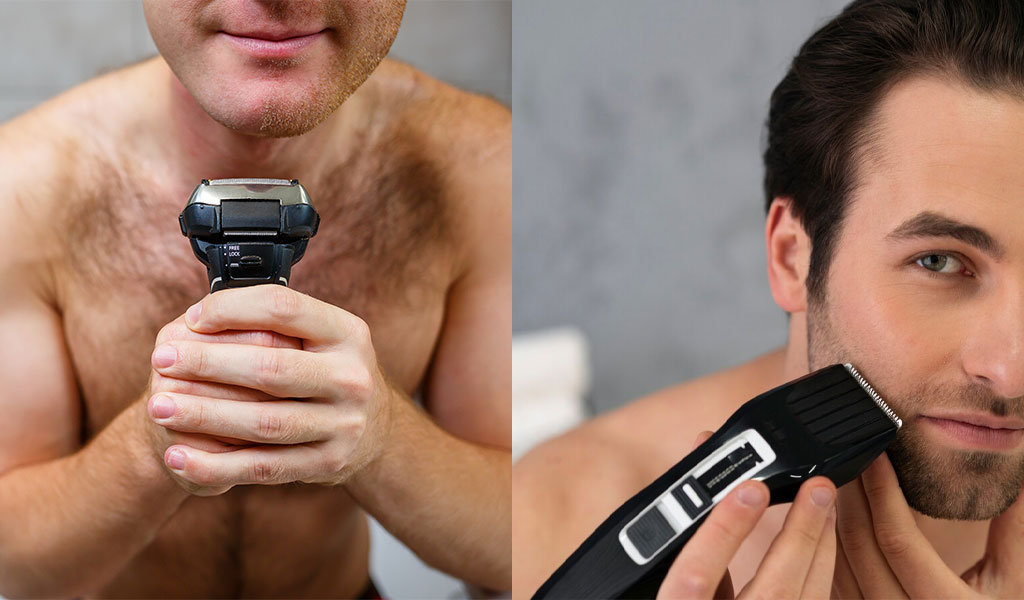
Here’s a detailed comparison between wet shaving and dry shaving covering various aspects:
Skin Sensitivity
Wet Shave: Wet shaving is generally considered to be more gentle on the skin, especially for individuals with sensitive skin.
The use of shaving cream or soap helps to soften the hair and lubricate the skin, reducing friction and irritation during shaving.
Additionally, the warm water used in wet shaving can help to open up pores and soften the skin, further minimizing the risk of irritation.
Dry Shave: Dry shaving, on the other hand, can be more abrasive on the skin, particularly for those with sensitive skin.
The lack of lubrication and skin preparation can lead to increased friction between the razor blades and the skin, potentially causing irritation, razor burn, and discomfort.
However, some modern electric razors come with features designed to minimize irritation, such as hypoallergenic blades or built-in moisturizing strips.
Efficiency
Wet Shave: Wet shaving is generally considered to provide a closer and more precise shave compared to dry shaving.
The combination of shaving cream or soap, along with the use of a sharp razor blade, allows for smoother hair removal and a more refined finish.
This can result in a cleaner shave with fewer missed spots, especially in hard-to-reach areas like the neck or jawline.
Dry Shave: Dry shaving may not always provide as close a shave as wet shaving.
While electric razors are convenient and can remove hair quickly, they may not be able to cut hair as closely to the skin’s surface as traditional razors used in wet shaving.
As a result, some individuals may find that dry shaving leaves behind stubble or requires more frequent touch-ups to achieve the desired level of smoothness.
Time Required
Wet Shave: Wet shaving typically requires more time and preparation compared to dry shaving. The process of lathering shaving cream or soap onto the face, followed by the actual shaving and cleanup, can take several minutes.
Additionally, some individuals may prefer to take their time with wet shaving to ensure a thorough and precise shave.
Dry Shave: Dry shaving is generally quicker and more convenient than wet shaving. Since there’s no need for water, shaving cream, or additional preparation, dry shaving can be done on-the-go or in a hurry.
Many electric razors also come with features like quick-charging capabilities or cordless operation, further streamlining the shaving process.
Equipment Needed
Wet Shave: Wet shaving requires several pieces of equipment, including a razor (such as a safety razor or straight razor), shaving brush, shaving cream or soap, and water.
Additionally, some individuals may choose to use pre-shave oils or aftershave products to further enhance the shaving experience.
Dry Shave: Dry shaving typically requires only one piece of equipment: an electric razor or shaver.
Unlike wet shaving, there’s no need for additional shaving products or accessories, making dry shaving a more minimalist and straightforward grooming option.
Smoothness of Shave
Wet Shave: Wet shaving is known for providing a smoother and more polished shave compared to dry shaving.
The combination of shaving cream or soap, along with the use of a sharp razor blade, helps to lift the hair follicles and cut them cleanly, resulting in a close shave with minimal stubble left behind.
Dry Shave: Dry shaving may not always achieve the same level of smoothness as wet shaving.
While electric razors are capable of removing hair quickly, they may not be able to cut hair as closely to the skin’s surface, leading to a slightly rougher shave.
However, some high-end electric razors come with multiple cutting blades or advanced shaving heads designed to provide a closer shave.
Risk of Irritation or Ingrown Hairs
Wet Shave: Wet shaving generally poses a lower risk of irritation or ingrown hairs compared to dry shaving.
The use of shaving cream or soap helps to lubricate the skin and reduce friction during shaving, minimizing the likelihood of razor burn or ingrown hairs.
Additionally, the warm water used in wet shaving can help to soften the hair and open up pores, further reducing the risk of irritation.
Dry Shave: Dry shaving can be more likely to cause irritation or ingrown hairs, especially for individuals with sensitive skin.
The lack of lubrication and skin preparation can lead to increased friction between the razor blades and the skin, potentially causing razor burn, redness, or itching.
However, some electric razors come with features designed to minimize irritation, such as adjustable cutting settings or built-in skin guards.
Frequency of Maintenance
Wet Shave: Wet shaving typically requires more frequent maintenance compared to dry shaving.
Traditional razors used in wet shaving, such as safety razors or straight razors, often require regular blade replacements or sharpening to maintain optimal performance.
Additionally, shaving brushes and other accessories may need to be cleaned and sanitized regularly to prevent bacterial growth.
Dry Shave: Dry shaving generally requires less maintenance compared to wet shaving. Electric razors are designed to be durable and long-lasting, with many models requiring minimal upkeep aside from occasional cleaning and lubrication.
Some electric razors even come with self-cleaning or self-sharpening features, further reducing the need for manual maintenance.
Cost Over Time
Wet Shave: The cost of wet shaving can vary depending on the quality of the shaving products and equipment used.
Traditional wet shaving products, such as high-quality razors, shaving brushes, and artisanal shaving creams or soaps, can be more expensive upfront but may provide a better shaving experience and last longer in the long run.
However, the ongoing cost of replacement razor blades and shaving products can add up over time.
Dry Shave: Dry shaving is generally more cost-effective in the long run compared to wet shaving.
While electric razors may have a higher initial cost, they typically require less frequent replacement of blades or shaving products, resulting in lower ongoing expenses.
Additionally, the convenience of dry shaving may lead to fewer impulse purchases of grooming products, further saving money over time.
Convenience
Wet Shave: Wet shaving requires more time and preparation compared to dry shaving, making it less convenient for individuals with busy lifestyles or tight schedules.
The process of lathering shaving cream or soap onto the face, followed by the actual shaving and cleanup, can be time-consuming and may not always be practical, especially when traveling or on-the-go.
Dry Shave: Dry shaving is generally more convenient and time-saving compared to wet shaving.
Since there’s no need for water, shaving cream, or additional preparation, dry shaving can be done quickly and easily, making it ideal for individuals who are always on the move or short on time.
Additionally, many electric razors are compact and portable, making them convenient for travel or use outside the home.
Environmental Impact
Wet Shave: Wet shaving may have a lower environmental impact compared to dry shaving, particularly in terms of waste generation.
Traditional wet shaving products, such as safety razors, shaving brushes, and shaving creams or soaps, are often made from recyclable materials and produce less packaging waste compared to disposable shaving products.
Additionally, many wet shaving enthusiasts opt for eco-friendly alternatives, such as reusable safety razors or biodegradable shaving products, further reducing their environmental footprint.
Dry Shave: Dry shaving may have a higher environmental impact compared to wet shaving, primarily due to the use of disposable shaving products and electronic devices.
Electric razors often require batteries or electricity to operate, which can contribute to energy consumption and electronic waste.
Additionally, disposable razor cartridges or blades used in dry shaving can generate a significant amount of plastic waste, especially if not properly recycled.
However, some electric razors come with rechargeable batteries or replaceable heads, which can help to reduce their environmental impact compared to single-use disposable razors.
Which One Is Safer: Wet Shave Vs Dry Shave
Both wet shaving and dry shaving have their own set of advantages and potential risks when it comes to safety. Here’s a comparison of the safety aspects of each method:
Wet Shave
- Less Risk of Cuts and Nicks: Wet shaving with a traditional razor can pose a higher risk of cuts and nicks compared to dry shaving with an electric razor. The sharp blades of a safety razor or straight razor require careful handling and technique to avoid accidental cuts, especially in sensitive areas like the neck or jawline.
- Reduced Risk of Razor Burn: Wet shaving typically involves the use of shaving cream or soap, which helps to lubricate the skin and reduce friction during shaving. This can result in a smoother shave with less irritation and a lower risk of razor burn compared to dry shaving.
- Lower Risk of Ingrown Hairs: The use of shaving cream or soap in wet shaving helps to soften the hair and open up pores, making it easier to achieve a clean shave without causing irritation or ingrown hairs. Proper technique and regular exfoliation can further minimize the risk of ingrown hairs when wet shaving.
- Potential for Irritation: While wet shaving can be gentler on the skin overall, improper technique or using products that don’t suit your skin type can still lead to irritation or razor burn. It’s important to use a sharp razor blade, avoid applying too much pressure, and moisturize the skin properly after shaving to minimize the risk of irritation.
Dry Shave
- Lower Risk of Cuts: Dry shaving with an electric razor typically involves less risk of cuts and nicks compared to wet shaving with a traditional razor. Electric razors are designed with safety features such as protective guards or hypoallergenic blades to minimize the risk of accidental cuts or abrasions.
- Reduced Risk of Razor Burn: While dry shaving may not always provide as close a shave as wet shaving, it generally involves less friction and irritation, especially for individuals with sensitive skin. Electric razors are designed to glide smoothly over the skin without causing razor burn or discomfort.
- Potential for Ingrown Hairs: Dry shaving may pose a higher risk of ingrown hairs compared to wet shaving, particularly if the hair is not cut closely enough to the skin’s surface. However, regular exfoliation and proper maintenance of the electric razor can help to minimize the risk of ingrown hairs.
- Skin Sensitivity: Dry shaving may be a better option for individuals with extremely sensitive skin or conditions like acne or eczema, as it involves less contact with the skin and minimal risk of irritation. However, some individuals may still experience discomfort or sensitivity when using an electric razor, especially if it’s not used correctly or if the blades are dull.
Wrapping Up
The choice between wet shaving and dry shaving ultimately comes down to personal preference, skin sensitivity, and lifestyle factors.
Wet shaving offers a traditional, ritualistic grooming experience, providing a closer shave with less risk of irritation or ingrown hairs. However, it requires more time, preparation, and maintenance.
On the other hand, dry shaving with an electric razor offers convenience, speed, and minimal risk of cuts, making it ideal for busy individuals or those with sensitive skin.
While dry shaving may not always achieve the same level of smoothness as wet shaving, advancements in electric razor technology continue to bridge the gap.
Whether you prefer the time-honored tradition of wet shaving or the modern convenience of dry shaving, both methods can provide a comfortable and effective grooming experience when done correctly.
